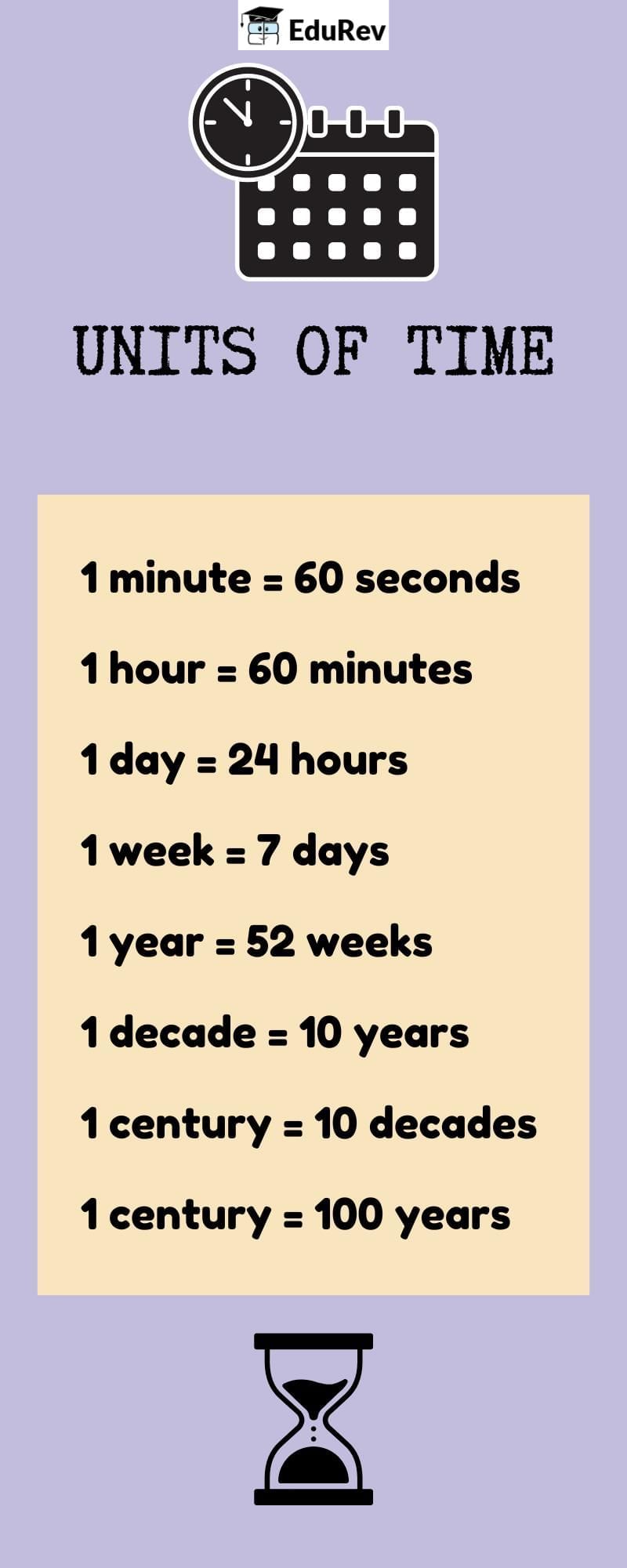Class 5 Exam > Class 5 Notes > Mathematics (Maths Mela) Class 5 - New NCERT > Let's Learn: Units of Time
Let's Learn: Units of Time | Mathematics (Maths Mela) Class 5 - New NCERT PDF Download

The document Let's Learn: Units of Time | Mathematics (Maths Mela) Class 5 - New NCERT is a part of the Class 5 Course Mathematics (Maths Mela) Class 5 - New NCERT.
All you need of Class 5 at this link: Class 5
|
35 videos|303 docs|7 tests
|
FAQs on Let's Learn: Units of Time - Mathematics (Maths Mela) Class 5 - New NCERT
| 1. What are the different units of time and how are they related to each other? |  |
Ans. The most common units of time include seconds, minutes, hours, days, weeks, months, and years. These units are interrelated: 60 seconds make 1 minute, 60 minutes make 1 hour, 24 hours make 1 day, 7 days make 1 week, approximately 30 days make 1 month, and 12 months make 1 year. Understanding these relationships helps us convert time from one unit to another easily.
| 2. Why is it important to learn about units of time? |  |
Ans. Learning about units of time is crucial because it helps us organize our daily activities, schedule events, and understand the passage of time in various contexts, such as science, history, and everyday life. It also lays the foundation for more complex concepts like time zones, calendars, and even scientific measurements.
| 3. How can we convert between different units of time? |  |
Ans. To convert between different units of time, you can use multiplication or division based on the relationships between the units. For example, to convert hours to minutes, multiply the number of hours by 60 (since there are 60 minutes in an hour). Conversely, to convert minutes to hours, divide the number of minutes by 60.
| 4. What is the significance of leap years in the context of time measurement? |  |
Ans. Leap years are significant because they help synchronize our calendar year with the astronomical year. A regular year has 365 days, but a leap year has 366 days to account for the extra approximately 0.25 days it takes for the Earth to orbit the sun each year. This adjustment ensures that seasons remain consistent over time.
| 5. How does the concept of time zones relate to units of time? |  |
Ans. Time zones are regions of the Earth that have the same standard time. The world is divided into 24 time zones, each generally one hour apart, based on the rotation of the Earth. Understanding units of time is essential for grasping how time zones work, as it helps us calculate the differences in time when communicating or traveling across different regions.
Related Searches















